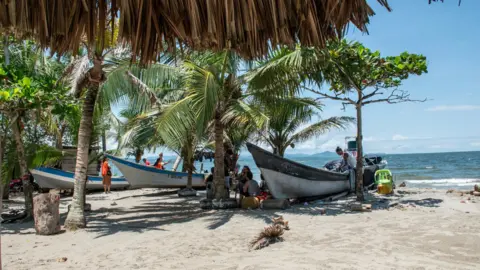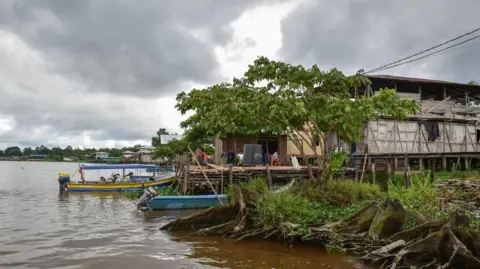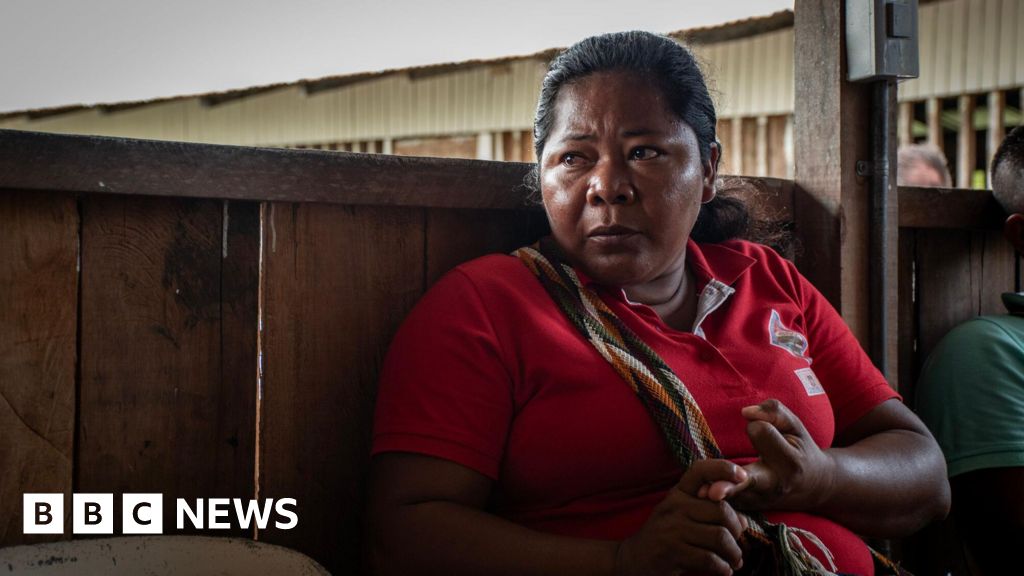 Jess Wanless/NRC
Jess Wanless/NRCThe number of Colombians living in areas where armed groups operate has increased by 70 percent in the last three years, warns the Norwegian Refugee Council (NRC).
According to the non-governmental organization, nearly 8.4 million civilians currently live in conflict zones where armed groups use intimidation and violence to control their lives.
The chairman of the Norwegian Refugee Council, Jan Egeland, told the BBC that rural communities in particular had come “under siege”.
Mr Egeland, who is currently visiting Colombia, said the rampant violence was harming not only Colombians but also refugees and migrants passing through these areas.
 Jess Wanless/NRC
Jess Wanless/NRCEight years after the Colombian government signed a peace agreement with the country’s largest rebel group, the Revolutionary Armed Forces of Colombia (FARC), violence has reached “devastating” levels, according to the NRC.
Although the demobilization of the majority of FARC rebels brought a sense of hope to the violence-stricken areas, the resulting vacuum was quickly filled by other armed groups.
Mr Egeland said the struggle between rival groups for control of territory and drug routes had left the situation in many regions worse today than it was immediately after the peace agreement.
Entire families are affected by the violence.
One tactic used by the armed groups as a demonstration of power is the declaration of so-called “Paros Armados” (armed strikes) in which they call on the civilian population to stay at home and not go to work.
This not only causes disruption to the community and thus closure, but also robs the breadwinners of their income and prevents children from going to school.
According to NRC figures, nearly 30,000 students have been affected by armed violence since January 2022. Some of them were forcibly recruited by the gangs, others saw their schools attacked or taken over by armed groups.
The spread of armed groups hit indigenous and rural communities particularly hard.
Mr Egeland described meeting members of the Eperara Siapidaria indigenous group in the southwestern province of Nariño, who told him of their fear for the survival of their culture in the face of threats and restrictions from armed groups.
The group had to leave their homeland due to previous armed conflicts and lives in a difficult-to-access jungle area north of the city of Tumaco.
Due to roadblocks and mines set up by rival groups in the region, they are unable to move freely or hunt.
 Jess Wanless/NRC
Jess Wanless/NRCThe conflict is so intense in some parts of the country that people are not only confined to their villages but are effectively under house arrest, Egeland told the BBC.
He also highlighted the impact of armed violence on those seeking refuge in Colombia and on migrants passing through the country on their way north to the United States.
“They are beyond desperate,” he said, calling on the international community to “stop talking about border security and focus instead on human security.”


